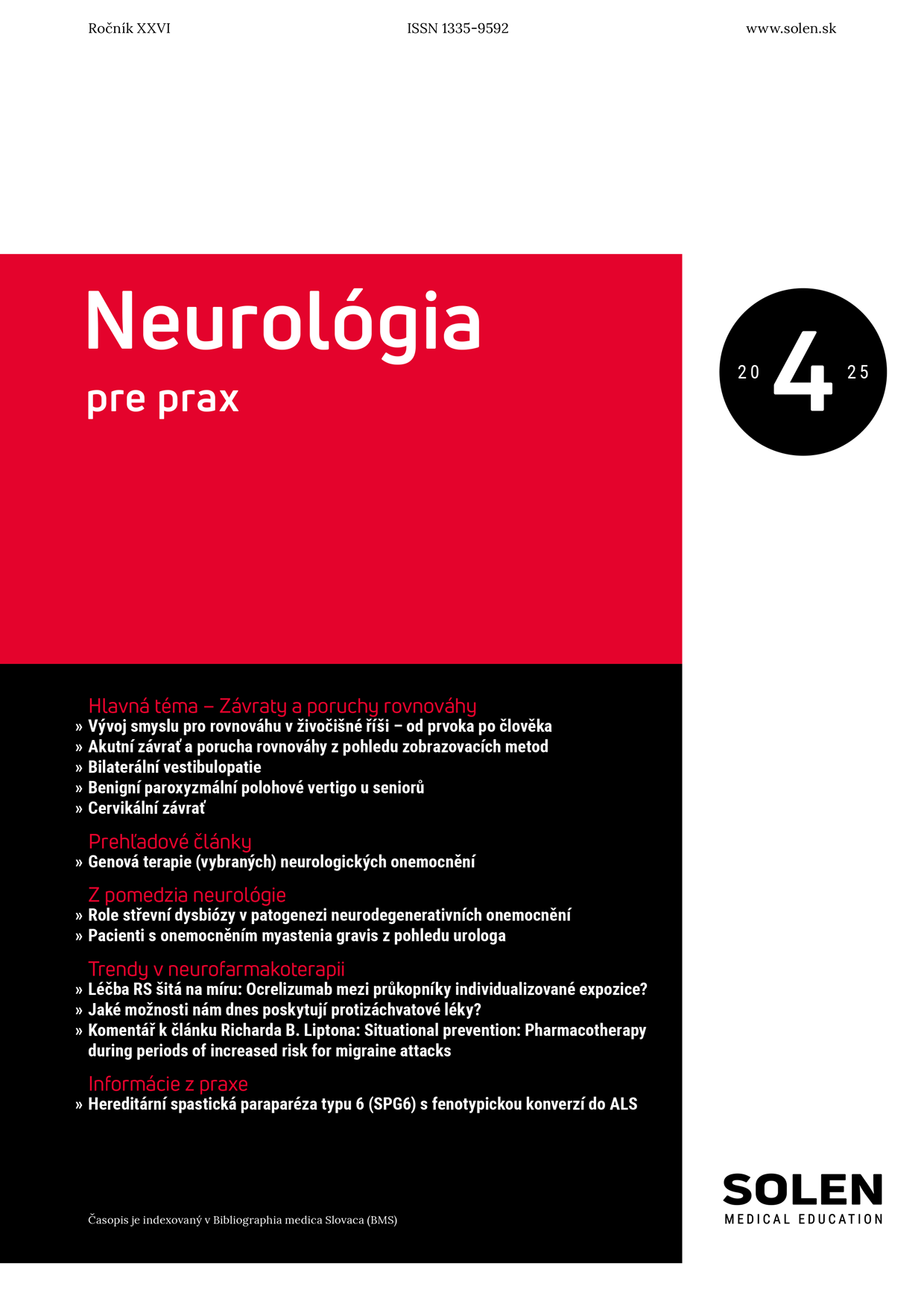Pediatria pre prax 3/2022
Liečiteľné vrodené poruchy metabolizmu s extrapyramídovou manifestáciou u detí
Doc. MUDr. Miriam Kolníková, PhD., MUDr. Dominika Kovárová, MUDr. Patrícia Balážová, MUDr. Silvia Radová
Dedičné metabolické poruchy sa často prejavujú pohybovými poruchami, ktoré sú v klinickom obraze viac či menej vyjadrené. Môžu byť hyperkinetické: dystónia, chorea, atetóza, myoklonus, tremor, stereotypie, alebo hypokinetické: hypokineticko-rigidný syndróm. Diagnostika týchto chorôb je často veľmi zložitá, pretože rovnaká pohybová porucha môže byť spôsobená rozličnými ochoreniami. Podľa doterajších zistení je evidovaných viac ako dvesto dedičných metabolických porúch spojených s poruchami pohybu. Polovica z týchto chorôb vykazuje dva alebo viac príznakov, z ktorých sú najčastejšie dystónia a ataxia. Pre skorý záchyt a liečbu je dôležitý správny diagnostický postup, ktorý najprv vyžaduje presnú charakterizáciu pohybovej poruchy (typ, vek a charakter nástupu, rozsah vzniku) a zistenie neurologických a iných príznakov, biochemické, rádiologické vyšetrenie a genetické testovanie. Podstatné je rýchle odhalenie liečiteľných porúch.
Kľúčové slová: vrodené poruchy metabolizmu, dystónia, chorea, atetóza, hypokineticko-rigidný syndróm
Treatable inherited metabolic disorders with extrapyramidal manifestation in children
Inherited metabolic disorders are often manifested by movement disorders that are more or less expressed in the clinical presentation. They can be hyperkinetic: dystonia, chorea, athetosis, myoclonus, tremor stereotypies or hypokinetic: hypokinetic-rigid syndrome. Diagnosis of these diseases is often very difficult, because of the fact that the same movement disorder can be caused by various diseases. To our current knowledge, more than two hundred inherited metabolic disorders associated with movement disorders have been registered so far. In half of these diseases two or more symptoms are present, the most common of which are ataxia and dystonia. Appropriate diagnostic approach, which requires an accurate description of movement disorder, is important for early diagnosis and treatment (type, age and character of onset, extent of onset) as well as other neurological and others symptoms, laboratory results, radiological findings, genetic testing. The essential goal is rapid detection of treatable disorders.
Keywords: inherited metabolic disorders, dystonia, chorea, athetosis, hypokinetic-rigid syndrome

















